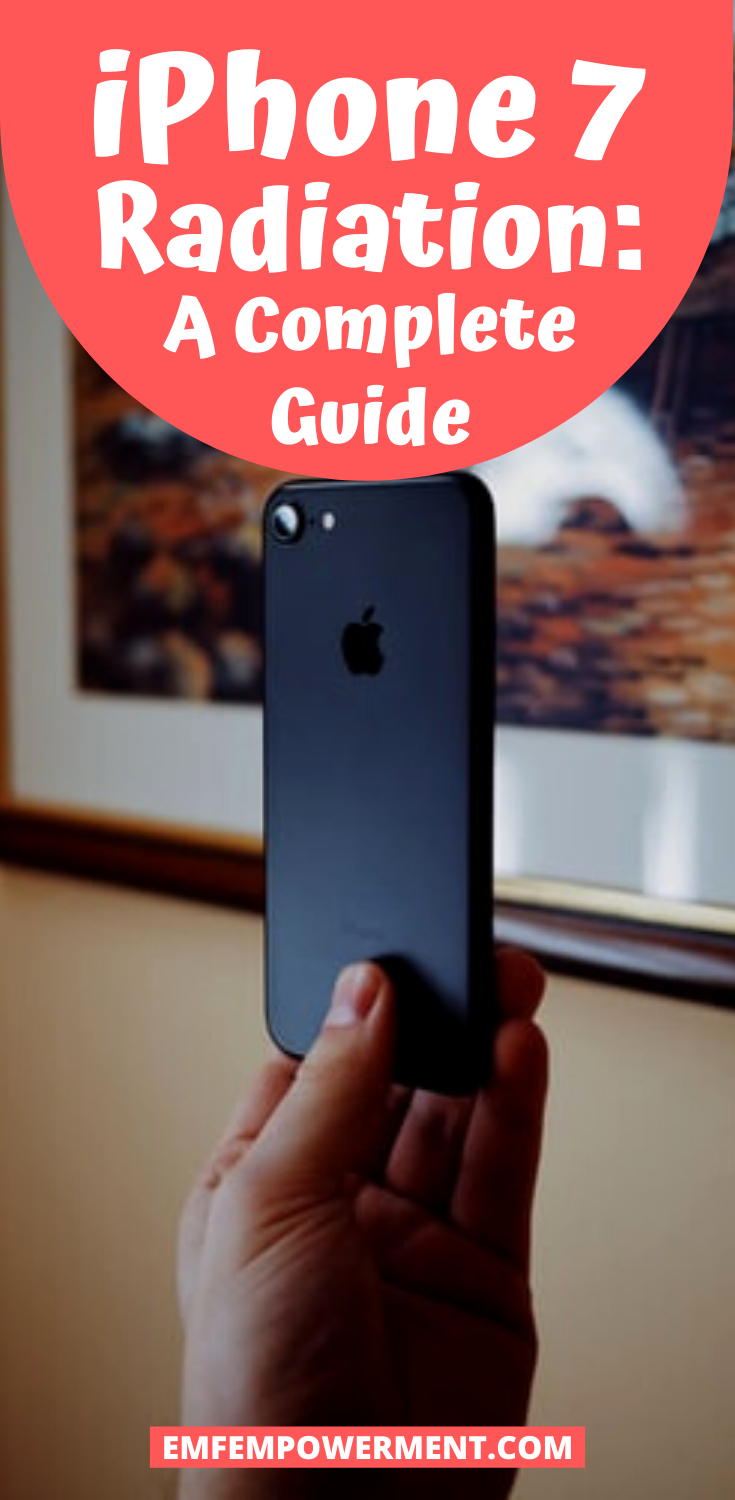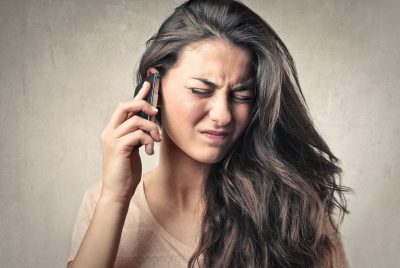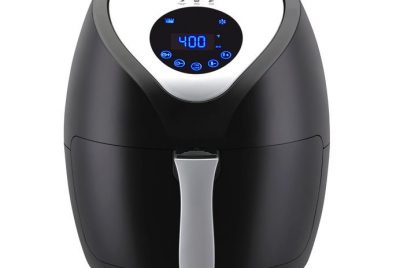On April 3, 1973, the first mobile phone was created. Since then, cell phone technology has…
iPhone 7 Radiation: A Complete Guide

*We may earn a commission for purchases made using our links. Please see our disclosure to learn more.
Although it’s several years old, the iPhone 7 is still a popular model of cell phone. If you’re still using an iPhone 7 or considering buying one from a third party, you may be wondering about the amount of EMF radiation produced by the device.
In this guide, we’ll take a look at some of the changes Apple made to the iPhone with the introduction of the 7, and how those changes could lead to an increase in EMF radiation. We’ll also take a look at SAR levels, and what you can do to reduce your EMF exposure.
iPhone 7 features
The iPhone 7 was introduced to the market in September of 2016. It offered several new features that set it apart from its predecessor, the iPhone 6
For one, the 7 was slightly water-resistant, built to withstand rain or a puddle drop. Apple also upgraded the phone’s built-in processor for faster and improved performance, as well as switching out the battery to a longer-lasting model.
One more controversial feature of the Apple iPhone 7 was the removal of the standard headphone jack. No longer would Apple phones be compatible with normal headphones. Users could either use Bluetooth or special headphones with a lightning jack.
The iPhone 7 also featured stereo speakers, for improved sound quality. The camera was also upgraded, with the standard model featuring a 12-megapixel camera and the 7 plus offering an additional 56mm telephoto lens camera.
iPhone 7 radiation
For the most part, the iPhone 7 isn’t drastically different from other cell phones when it comes to the production of EMF radiation. When the device is powered on, some amount of extremely-low frequency (ELF) EMF radiation is emitted. And when it’s producing or receiving a signal — whether that’s connecting to WiFi, the cellular network, or another Bluetooth device — radiofrequency (RF) radiation is produced
One feature that does set the iPhone 7 apart from other makes and models on radiation is the headphone jack. The iPhone 7 encourages users to switch to Bluetooth, as charging port doubles as the headphone jack. You need to invest in a special pair of headphones with a lightning port, and you can never use them while the phone is charging.
Bluetooth is a form of RF-EMF radiation, and Bluetooth headsets are especially problematic because of their proximity to your brain when in use. It seems likely that Apple did this to encourage uses to switch to their Bluetooth-using Airpods, which were released later the same year as the iPhone 7.
SAR levels
Specific Absorption Rate (SAR) levels represent the amount of radiation absorbed by a gram of tissue. This measurement can be problematic because it’s not always an accurate representation of how the phone is actually used. The technique assumes the user is on a phone call for 30 minutes, whereas in modern times, most cell phone users are going to be far more concerned with apps than phone calls.
Nonetheless, SAR levels are the benchmark we have to go on for EMF safety. The following are SAR levels for the iPhone 7 as reported by Apple, along with the levels for the iPhone 6 for comparison.
Tribune investigation
| Model | 1.6W/kg SAR limit | 2.0 W/kg SAR limit |
|---|---|---|
| iPhone 6 | ||
| A1549 | Head 1.08 Body: 1.14 | Head: .93 Body .97 |
| A1586 | Head 1.18 Body: 1.18 | Head: .97 Body .98 |
| A1589 | Head: .38 | |
| iPhone 6 Plus | ||
| A1522 | Head 1.14 Body: 1.16 | Head: .91 Body .99 |
| A1524 | Head 1.19 Body: 1.19 | Head: .91 Body 1.0 |
| A1593 | Head: .37 | |
| iPhone 7 | ||
| A1660 & A1780 | Head 1.19 Body: 1.2 | Head: 1.37 Body 1.39 |
| A1779 | Head 1.2 Body: 1.9 | Head: 1.38 Body 1.34 |
| iPhone 7 Plus | ||
| A1778 | Head 1.19 Body: 1.19 | Head: 1.38 Body 1.34 |
A 2019 investigation by the Chicago Tribune involved testing 11 different models of cell phones to determine how their SAR levels compared to the levels reported to the FCC. The study centered around the belief that existing regulations may not go far enough to protect the public from the effects of radiofrequency radiation. Currently, the exposure limit is set to 1.6 watts per kilogram (w/kg) per gram of tissue.
As a part of the study, cell phone models were tested at two different distances from the body. The first distance measured was in line with standard cell phone manufacturer tests — depending on the model, that can be anywhere from five mm to 15 mm from the body. The second distance measured was a more realistic distance of two mm, to represent the distance between the body and phone when the device is stored in a pocket.
Most of the 11 phones measured scored over the legal limit at that two mm exposure point. The iPhone 7, however, was over the legal limit even at a distance of five mm from the body — the distance Apple claims they perform their own tests at. Researchers repeated the test with three more iPhone 7s, all brand new. All produced the same result.
Apple responded to the test by saying the procedure used by the Tribune’s researchers differed from the method used by Apple labs to test SAR levels. The FCC responded by promising to investigate iPhone 7 SAR levels.
iPhone 7 safety tips
- Don’t store your phone in your pocket. The Chicago Tribune’s test showed pretty compelling evidence that at pocket-distances, the iPhone 7 is producing potentially hazardous levels of radiation. When it boils down to it, carrying your cell phone in your pocket is a bad idea no matter what model you use, due to the ties to cancer and infertility.
- Use a wired headset. Don’t give in to the temptation to purchase those sleek new Airpods just because your normal headphones won’t work. Wired headsets are a much safer bet, as they produce significantly less EMF radiation. And fortunately, there are plenty of wired models out there for the iPhone 7. If you can’t bring yourself to stray too far from the Apple brand, the manufacturer does make a wired headset with a built-in remote and microphone for relatively cheap.
- Put your phone in airplane mode at night or when not in use. If your phone is sending or receiving a signal, it’s generating RF-EMF radiation. If you’re not going to be using your phone for a while or will be doing an activity you can perform offline, set the phone in airplane mode. You can even download music, books, movies, and certain games.
- Use an RF shielding case. RF shielding cases are designed to keep your body protected from your phone’s EMF radiation when the device is not in use. SafeSleeve makes a model with vegan leather that is compatible with the iPhone 7 and 7 Plus. It has a built-in wallet, as well, so you can store your credit cards and driver’s license. SafeSleeve’s case was lab-tested to block up to 99% of RF-EMF radiation when used correctly.
- Hold your phone over 10mm away from your body when in use. The Tribune’s test showed that even at the standard five mm distance, the iPhone 7 may not be safe. With that in mind, try to hold the device at least 10 mm away from your body while using it. And at night or when the device is not in use, keep it a few feet away from you to reduce your exposure even further.
Final thoughts
The iPhone 7’s EMF production isn’t unique, but it still warrants protection. If you use an iPhone 7, take steps to reduce the amount of radiation you’re exposed to, especially while the phone is in use. 



